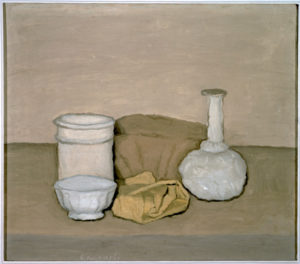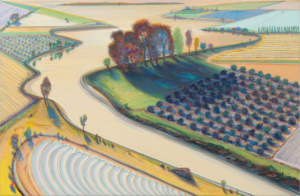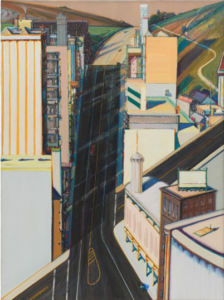by Sara Wessen Chang

I like to think that Mr. Wayne Thiebaud and I have a few things in common. We both call the city of trees—Sacramento—home. I share his preferences for black coffee, yellow peaches, and the circus pancakes at Pancake Circus. We both frequently make the drive to and from San Francisco. The first time he drove to SFMOMA was in 1942, seven years after its opening. He recalls transporting paintings, including Salvador Dalí’s Oedipus Complex (1930), shortly thereafter for an exhibition he was involved with at the annual California State Fair in Sacramento. The truth is, where I’m from, Thiebaud is a local hero. With more than eighty years of experience as an artist and teacher, he is one of the most valuable sources of artistic wisdom living today. Over the last year I’ve had the humble privilege of coming along for the ride as he curated an exhibition at SFMOMA entitled Wayne Thiebaud: Artist’s Choice.
Generally, museum exhibitions revolve around a specific artist, movement, or time period. This exhibition strays from the norm in that Janet Bishop, Thomas Weisel Curator of Painting and Sculpture, gave Thiebaud carte blanche to fill three galleries with any selection of paintings from the museum’s collection. After spending one day in storage, looking at hundreds of paintings by a variety of artists, Thiebaud narrowed it down to a lean, mean thirty-five. And by “looking” at paintings, I mean a combination of looking, laughing, conferring with his gallery associates Colleen Casey and Clay Vorhes, examining materials with his pocket flashlight, and truly savoring each composition’s unique flavor. Considering that the Latin root of “curator” means “to take care,” Thiebaud is a natural curator. Immediately, my colleagues and I were struck by the sheer attention and discernment driving each choice.
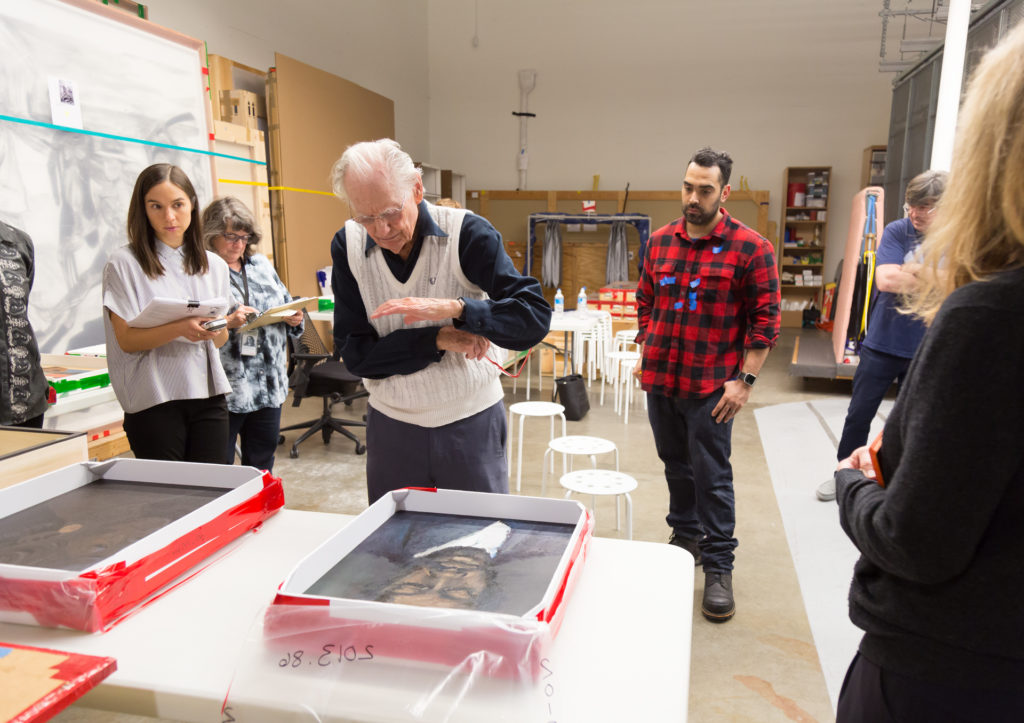
In due course we sent a box of thirty-five maquettes (small-scale models) of the paintings he selected and an accordingly scaled floor plan to Thiebaud’s gallery and studio in midtown Sacramento. Arriving there one summer day thereafter, we encountered new paintings of Thiebaud’s leaning up against the walls, recalling the production lines of cakes in his early depictions of confectionery cases. A single still life by Giorgio Morandi hung on the wall, near a suite of pre-Columbian sculptures—a gesture of his admiration and profound respect for the history of art. On a prominent table in the middle of the room, the proposed floor plan was neatly laid out, held down by pennies, each maquette given a particular placement.
We gathered around the table, diving into a conversation that quickly became an afternoon-long art class led by Professor Thiebaud. He reveled in his history with SFMOMA, memories of fellow artists, the fundamentals of planometric structure, and the practice of copying great artists’ works. He discussed in detail why he’d selected each painting: provenance, subject matter, painting facture, or simply a gut feeling. My notes from that day have the following maxims scribbled and circled: “Get to work!”; “Turn it upside down”; “Keep one bare foot on the ground”; “Don’t say anything negative”; “Come to the party.” We left that afternoon with overflowing content for the exhibition labels, and a restored curiosity and wonder for art.
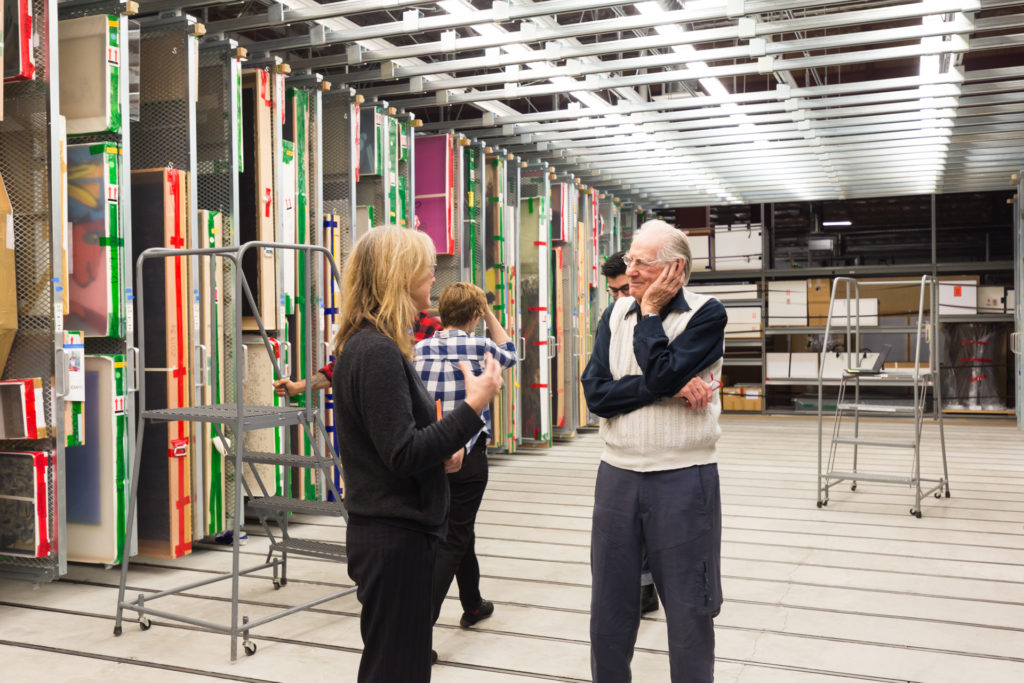
Suddenly, it was September and time for installation. Over the course of two days, with the assistance of an enthusiastic crew of preparators, Thiebaud’s vision came to life. Paintings of all genres—still lifes, landscapes, figurations, abstractions, and even one forgery—were hung together in a surprising harmony. We then spent the following two weeks installing Thiebaud’s work, forty-two drawings and paintings to be exact, in the companion exhibition Wayne Thiebaud: Paintings and Drawings. With his voice and perspective fresh in my mind, his paintings resonated with greater dimension and meaning.
Now, whenever I drive home to Sacramento and the golden sunshine slants sideways over the Delta, I can’t help but think of Thiebaud’s riverscapes. When I drive back to San Francisco and the street intersections unfold like paper chatterboxes, I think of his cityscapes. The imagery in Thiebaud’s paintings—pies, cakes, cities, mountains, figures—feels familiar, for these are the shared parameters of our American lives. That is the glory of Thiebaud’s work. His artwork, this exhibition—and the man himself, it seems—conjure a homegrown feeling of commonality.
Wayne Thiebaud: Artist’s Choice is on view through March 10, 2019. Wayne Thiebaud: Paintings and Drawings is on view through April 28, 2019.


